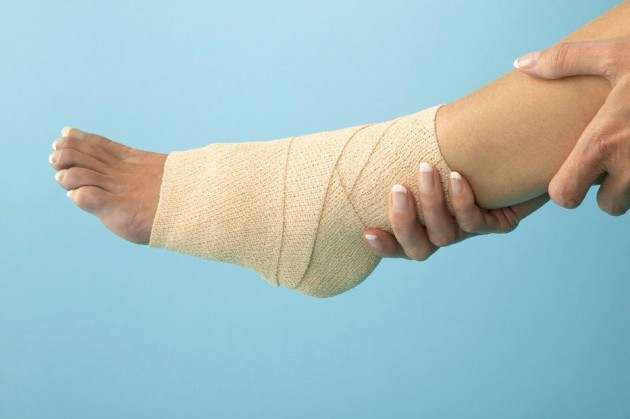
Sprained ankle
All joints have ligaments which are strong bands of fibres that go from one bone to the adjacent one, these ligaments provide stability to the joint. A joint sprain occurs when one or more ligaments are stretched or torn.
An inversion sprain of the ankle occurs if the ligaments on the outside of the foot are affected. This happens if the foot goes underneath the body with the sole of the foot facing inwards, a common cause of this injury is going over on a kerb, or unseen loose stone. Pain and swelling occurs mainly on the outside of the ankle.
Because of the shape of the bones of the ankle, an eversion sprain is much less common. It happens if the ankle is turned outwards and affects the ligaments on the inside of the ankle. Pain and swelling occurs primarily on the inside of the joint.
Sprained Ankle Treatment in the Immediate Post Injury Period
As soon as possible after the injury apply ice. Using ice as the first line sprained ankle treatment limits the amount of swelling that builds up, by temporarily reducing the circulation to the area.
The mnenonic RICE is often used to describe the treatment needed at this stage:
Rest: Relative rest is needed, by which is meant refraining from sport and staying off the ankle as much as possible.
Ice: Apply an ice pack to reduce swelling
Compression: Use some gentle compression, such as a bandage, to reduce swelling
Elevation: lie with the foot elevated to reduce swelling.
Gentle movement of the foot, pulling the toes up, and pointing down, within the limits of the pain, also starts to reduce swelling and restore movement.
Sprained Ankle Treatment in the Intermediate Period
As time goes on, the foot movement can be increased and it is important to strengthen the muscles around the ankle and the lower leg by exercise. Exercises need to be gradually progressed to those done with the body weight on the foot.
The final and probably most important stage of sprained ankle treatment is to retrain what is known as the proprioceptive feedback mechanism.
All ligaments in the body have a huge role in telling the brain what position a joint is in. Every fraction of the second receptors in all joints are sending information to the brain about the joint’s position, in turn the brain activates appropriate muscles to alter the joint position accordingly. This is known as the proprioception feedback loop and to prevent injury to a joint it must happen continuously and rapidly.
When the eyes are open the visual feedback the brain receives also gives the brain a lot of information about joint position, however if there is for instance an unseen obstacle or an uneven surface, the proprioceptive mechanism must work rapidly and effectively to prevent a further sprain from occurring. Lack of re- training of the proprioception mechanism is the most common reason that an ankle which has been sprained once would be re-sprained again in the future.
The proprioceptive feedback mechanism is retrained using balance exercises. A wobble board is a good way of doing this.
Sprained Ankle Treatment, Return to Sport
Many sportspeople find that they lack confidence in the ankle when first returning to sport and fear a re-sprain. Taping, or an ankle support, can help in this situation.
Care should be taken however to continue to build up the joint’s natural proprioceptive mechanism, so as not to become over- reliant on a brace or taping.
Read more articles about Physiotheraphy.
Check out our Interviews section, every Tuesday a new intervew! Tomorrow read about…